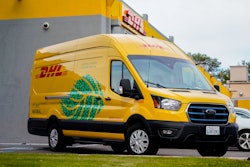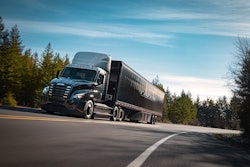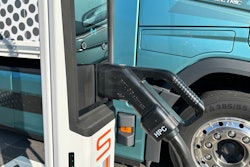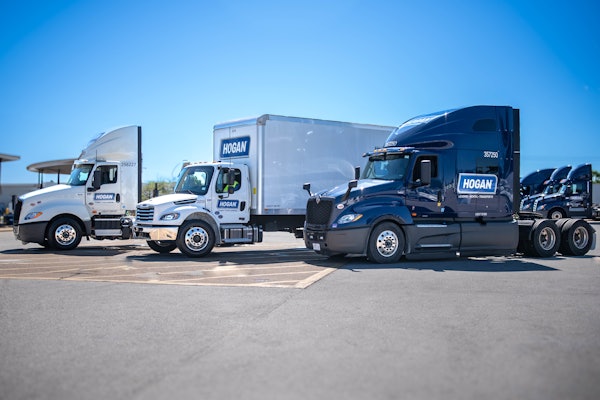If all you have is a hammer, all your problems look like nails, right? But, if all you have is a screwdriver, well that’s an entirely different story.
Over the years I’ve had countless “some assembly required” procurements that have come with complimentary screwdrivers. As a recovering engineer I do not have the genes that permit me to throw away a good tool. My toolbox screwdriver drawer now has enough Phillips head screwdrivers to outfit a small army of workshop helpers. I suspect this is how Santa Claus got his elves outfitted.
Stick with me here. I will relate this to trucks soon.
There are fundamental differences between a hammer and a screwdriver. Drop forged claw hammers have essentially two purposes in life: to put a nail in or pull one out. They have become quite sophisticated over the years, paying close attention to ergonomics, sound, vibration, etc. But unless you are a contestant on Forged in Fire and tasked with making a broad sword by salvaging a hammer, hammers really are not all that useful for anything else but the occasional wrecking yard mayhem.
Screwdrivers, on the other hand, seem to have an almost infinite number of alternative uses than just installing and removing screws. Have you ever needed to punch a hole in something? I’ve combined a hammer and a Phillips screwdriver to punch a few holes in a range of materials. Ever needed to pry something open? The long lever arm of the screwdriver can be very useful in the absence of a prybar. Need a magnet? Whether or not you wanted your screwdriver to be magnetic, at some point in time it became so, so why not make use of that feature? Ever used a screwdriver to short out an electrical circuit? And for those Forged in Fire fans, a Phillips screwdriver can be made into a variety of other tools from chisels and knives to knitting needles.
I promised to relate this to trucks.
NACFE’s tremendously successful recent Run on Less Electric – DEPOT demonstration of battery electric trucks showed that electric trucks are more than a one-shift-per-day vehicle. Like the Phillips screwdriver, creative operators kept finding innovative ways to get more out of the trucks than just the stated one-charge trip.
Much of the social media and trucking media coverage during the Run focused on the Tesla Semi. PepsiCo operators did a phenomenal job of demonstrating what could be done exceeding 1,000 miles in one 24-hour period delivering soft drinks in a multi-shift, multi-charge day.
Still other fleets found “new” ways of using their trucks. Several of the Run on Less fleets figured out that they actually didn’t need to charge their trucks every day. This seems like such an obvious finding since most of us don’t fuel our vehicles every day, but to the researchers and regulators out there focused on worst case analyses, the fact that some fleets don’t need to charge their vehicle every day is a revelation. Having larger battery packs than needed for one day’s operation actually turns out to be beneficial to some fleets. There’s a revelation.
After years of seeing medium-duty trucks with 120- to 200-gallon tanks, this does not surprise me much, but that’s me. In one of the SuperTruck programs, software was developed to estimate how much fuel was required for that day’s trip, then a bit was added as a safety margin with the intent that the driver would put just enough fuel in to do the day’s job. The reason being that fuel – at 7.2 pounds per gallon – is heavy and spare fuel carried all day long eats into your fuel economy. Fleets were not impressed. Some of the medium-duty fleets I talked with had their drivers fill up their tanks every day, whether or not they needed it, even if it meant taking the driver out of route to a local station.
Other fleets in Run on Less managed to get their Volvo and Freightliner semis to go farther than the manufacturer’s one-charge estimates through mid-route or en route charging events. The paradigm being challenged here is the naïve assumption that every charge event takes the battery electric truck from a near-zero state of charge to full. It turns out that the tank is not always empty when you go to the charging station. Again, this seems pretty obvious from my liquid fueled truck history, but somehow that point seems surprising to people posting on social media.
The nature of charging batteries is that they typically don’t get much below 10% or 20% state of charge. The OEMs have software that derates the vehicle below that threshold much in the same way that emissions systems will derate engine horsepower when the emission system has run out of DEF.
In the mid-range of charging – from a state of charge of 20% to 80% – the charging is fairly quick. The chemistry of the battery allows quick charging in this band without overheating the battery pack. Above 80% state of charge, the charging rate has to slow down. That last 20% can take twice as long or more than the mid-range charging. That top end of charging is also where a good deal of the risk occurs to battery life. So the OEMs have multiple ways of tailoring the charging rate to not damage the battery.
Run on Less is showing that fleets don’t need one charger for each truck. They can have multiple trucks for each charger. Again, as a liquid fuel user for decades, I’ve never seen one fuel pump per vehicle as a requirement, but somehow that is the foundation of many worst-case planning scenarios for electric vehicles.
One trucking industry group has discounted the feasibility of heavy-duty trucks going long distances simply because they can only charge once per day and the battery packs in their scenario have to be sized to go the whole day’s drive. Meaning that one charger is in use during the whole charging time slot, and the battery packs are so heavy that freight weight is impacted. I have done multiple 900 mile trips in my own vehicles over the years and I can tell you I had to fill up mid-way. But far be it for me to argue with experts.
Run on Less has shown that quick charging is real. It also has shown that you don’t need to charge all the way back to 100% every time you hook up to a charger. Some duty cycles allow for charging to 80% and still allow you to get all your work done. The corollary in the liquid fueled world would be those situations where you only wanted to put in 40 gallons of fuel at a truck stop for whatever reason; fuel price at the stop was too high, you felt you didn’t need more than that to get to the next fuel stop, whatever. As a teenager I can recall having only a $5 bill in my pocket and that’s all the fuel I put in my dad’s car.
I started this blog comparing claw hammers to Phillips screwdrivers. I’ve spent a lifetime around diesel trucks and helped put them on the road. I’ve described diesel trucks as the Swiss Army knife of trucks, able to do everything, not necessarily well, but everything. I am rethinking that. Others have pointed out that the diesel is more like a hammer. It’s a brute force approach to solving the movement of freight.
Zero-emission vehicles — which include battery electric trucks — are going to be more like Phillips screwdrivers. They will be capable of doing much more than what the factory specifications artificially limit them to. Those fleets that get them into operation are going to find ways to optimize them and get the most from their investment. These are not going to be the typical prototype technology that gets parked at the fence when the news cameras are off. These are going to be working trucks and the fleets will want to get all they can from them.













